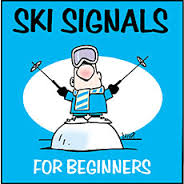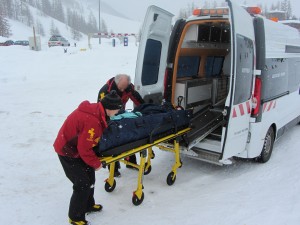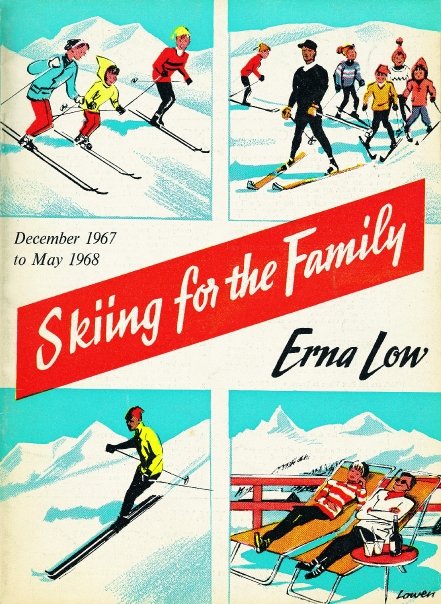How to avoid knee injury while skiing
Following the large quantities of snow in the Alps, the several serious avalanches in recent days serve as a sobering reminder to us all that, together with the idyllic mountain scenery and fresh alpine air, from the first ice-cold chairlift of the day to the steaming Glühweins at the après ski, skiing is not without its dangers.
Indeed, over 1,000 skiiers and snowboarders being admitted to hospital each year with injuries, including Carl Downing, our Transport & Travel Advisor, who injured his knee in Les Deux Alpes last week.
Here’s some footage of a massive recent avalanche near Randa, on the road to the Swiss resort of Zermatt. Luckily nobody was hurt:
Now, let’s be clear – we’re not trying to put you off skiing or scare you in any way! We just want to draw your attention to the fact that it’s important to be aware of the types of injuries possible on the slopes and how best to stay safe.
So here are some thoughts from winter sports specialist, Louise Spence, Physiotherapist at BMI Hendon Hospital, to find out which injuries we are most at risk of, which of these are preventable, and what we can do to prepare ourselves physically to reduce our risk of damage.
What types of skiing injuries are most common?
“Knees are the most common joint injured from skiing, knee ligaments making up the majority of these. ACL injuries are common in ski falls due to the twisting force going through the knee usually with the foot fixed in the ski binding.”
Are any of these injuries preventable?
“Whilst it is impossible to entirely prevent skiing accidents there are key things that can be done to minimise the risk of injuries by being in good physical shape. ACL injuries often occur when you sit too far back when landing a jump or by twisting at the knee during turns, so good technique is very important. However, by ensuring your body is in the best shape before you even hit the slopes makes a huge difference. Even if you are unfortunate enough to have a skiing accident, the severity of the injury can be reduced and recovery improved, the better shape you are to start with.”
How can I prepare my knees for a skiing trip to reduce my chance of injury?
“Having good knee stability is important and this can be achieved by ensuring the quads are strong and that the ITB (ilio-tibial band) which runs from the outside of the hip to the knee isn’t too tight which can affect knee function by altering the mechanics of how the knee joint and knee- cap work.”
If I get a knee injury on the slopes, what action should I take?
“For any acute injury, immediately following the PRICE principle is important- Protection, Rest, Ice, Compression and Elevation. Getting assessed as soon as possible after an injury is vital to ensure it is diagnosed and managed appropriately to minimise complications and speed up your recovery.”
What treatments are available for me?
“Getting assessed as soon as possible after an injury is vital to ensure it is diagnosed and managed appropriately to minimise complications and speed up your recovery. Treatments may vary depending on your personal injury.”
What can I do to aid my own recovery?
“Ensuring you are in good physical shape prior to skiing trips goes a long way to minimising injury risk. Having a Physiotherapy assessment prior to your ski trip to iron out any niggles and to identify and address any areas of weakness minimises the risk of serious injury. By being in good physical shape, your recovery will be quicker. Ensuring you have adequate fitness levels and good muscle strength in your lower limbs, especially your quads is key. Following expert advice post-injury is vital to ensure your recovery is effective and not delayed.”
What do you personally do to prep your knees before you hit the slopes?
“Before my skiing debut I made sure I had the right equipment and my body was in good physical shape by maintaining good fitness levels. I spent time ensuring my leg muscles around the knee and ankle were strong and worked on endurance and balance as well as strength. I prioritised ankle balance and quads strength to ensure my knees were in good shape by doing functional quads strengthening exercises. I also increased my core stability programme. I made sure I had good nutrition and hydration on board so I had enough fuel to keep me going.”
Here are some further safety tips from the team at FamilySkiNews:
 Get fit before you go – see our top tips for ski fitness HERE
Get fit before you go – see our top tips for ski fitness HERE
Wear a helmet – here’s why
Be mindful of others, and make your intentions clear
Keep to marked runs
Moderate your speed and follow the rules of the piste. You can see a kiddy-friendly version of them HERE!
Oh… and do make sure you have winter sports cover on your holiday travel insurance policy! Better to be safe than sorry!










